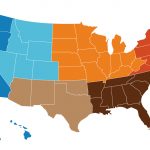OnionBusiness’ Sherise Jones is in Monterey this week, attending the return to an in-person event for PMA Foodservice. Like everyone in the produce and foodservice worlds, Sherise is excited to reconnect with industry friends. If you’re lucky enough to be in the beautiful seaside town and spot her – she’ll be on the go during the show! – be sure to say hello!
With that in mind, we’re revisiting the past six months to look at where we were and where we are, starting in January and moving right up to mid-July.
COVID-19 protocol was in high gear, and foodservice was hard-hit. The closure of restaurants slammed that market segment. Retail demand for onions was for the most part reported as good at the start of the year, although our contributors varied in their accounts of just how brisk movement was. Some areas were slower than others, but the majority of comments we received were favorable to the Farmers to Families Food Box Program that was helping keep produce moving and the economy buoyed.
Crop conditions were also mostly reported as good, with mild temps in the Southwest and South.
Foodservice was looking more hopeful as February started off and eateries adapted to pandemic protocol. Retail continued to drive the bus. Northeast storms messed with transportation into that region, but shipping prices were described as “stable.” Crops progressed well in the early-season growing areas.
Demand for some areas in mid-February escalated to “huge,” according to contributors. Texas was hit by a nasty storm that caused disruptions in transportation and effectively shut down some parts of the state temporarily. The 1015 crop was affected, but it turned out not to be as serious as initially feared. New Mexico was spared from the freeze. Transportation became tighter, and rates started rising. By the end of the month the assessment on Texas was that more than 20 percent of the crop, the early onions, was lost but intermediates were said to be OK; foodservice was picking up; transportation was tight; Mexico was coming in; Vidalia, New Mexico, Walla Walla and California were on track.
Early March demand was described as “phenomenal” by more than one contributor, with our contributors from Idaho, Oregon, Washington, Utah, Wisconsin and Mexico all reporting good pace for shipping. Prices were “skyrocketing,” one shipper said. Storage quality was said to be excellent, and the crops hit by adverse weather were rebounding, growers reported. Trucks had become more available as well.
By the end of the month, demand had slacked off, and that trend continued into April. Trucks were “challenging,” and rates were high.
In mid-April the Texas Rio Grande Valley deal was going, and overall demand was said to be good for jumbos. Some shippers in Idaho-E. Oregon were finishing their 2020-21 shipping season. Trucks were tight and expensive. Early Georgia sweets were shipping; the official Vidalia pack date was April 19, and that area was optimistic. Crops in the Columbia Basin, Eagle Pass, TX, and Cali were looking good, our contributors said. More NW shippers were winding down as Cali started to kick in at the end of April.
The clean-up in the NW continued in May, and California gained traction. The S. Texas harvest was winding down, and demand and market conditions for that area’s product was said to be steady. Idaho-E. Oregon’s 2021 crop was in the ground and being irrigated, and parts of New Mexico were looking at an early start. Freight was high, but optimism over the reawakening foodservice industry was also good. By late May some of Vidalia’s growers were finished with harvest, and Eagle Pass, TX, was shipping. New Mexico was starting up as well.
Early June saw activity in new crop areas pick up. New Mexico was moving briskly, the Imperial Valley was going strong, and trucks were hard to find. Onions were also coming in from Mexico. Crops were progressing with no news of weather setbacks. Threats of a pallet shortage circulated during the month, but overall activity was steady. Walla Walla started a bit earlier than its normal mid-June date, and demand for onions from all areas was reported to be good to excellent. Later in the month, transportation costs were called “exorbitant” by one contributor. Warmer weather was bringing crops on, and some Western Colorado shippers said mid-August was being eyed as a possible start date.
July’s start saw some areas very short on labor, and rain was making harvest tricky in New Mexico. Elsewhere, record temps were being reported, although no crop issues were noted. Mid-month, when we last talked to our contributors in various areas around the country, demand was “decent” to “outstanding” to “we’re hammered.” Colorado could be a bit early; California continues to ship out of the Central Valley, Idaho-E. Oregon’s crop is sizing up, and PMA Foodservice is, we believe, a harbinger of good things to come.



